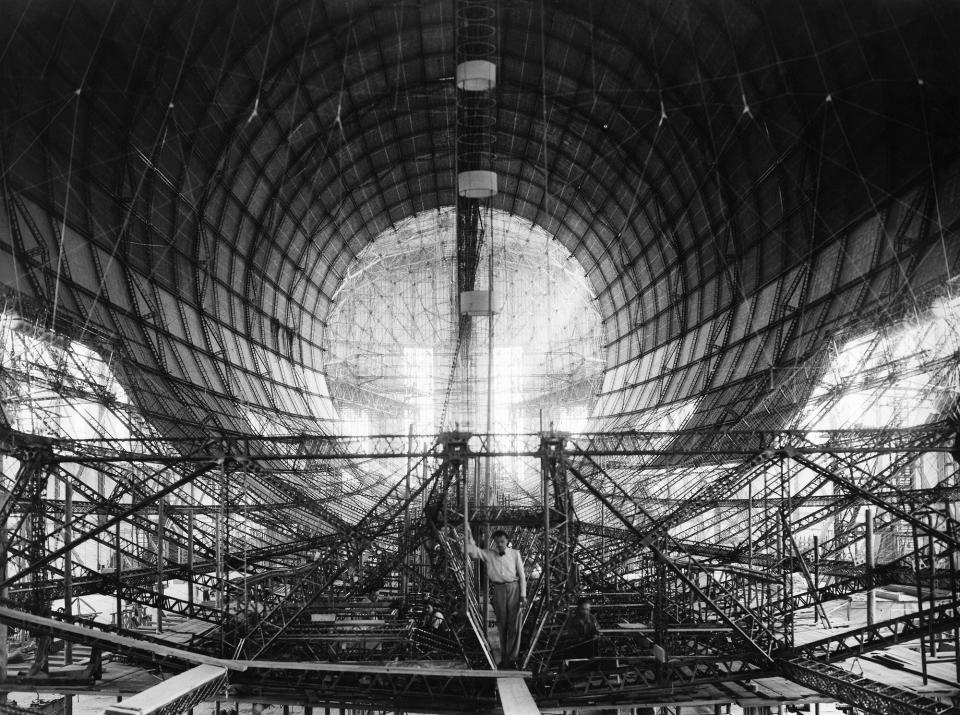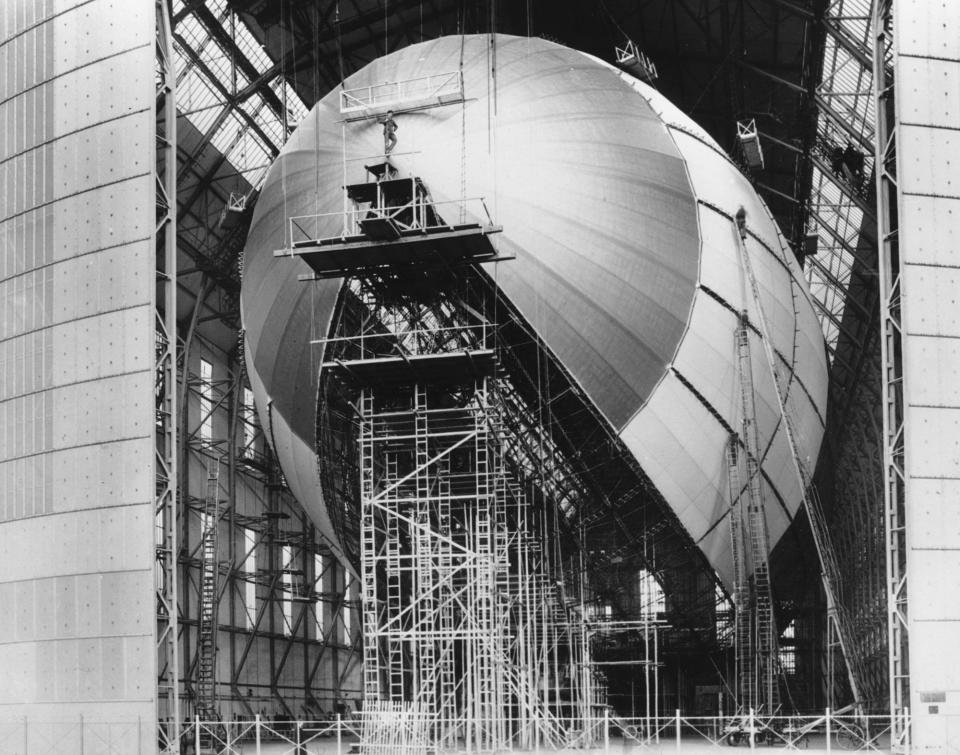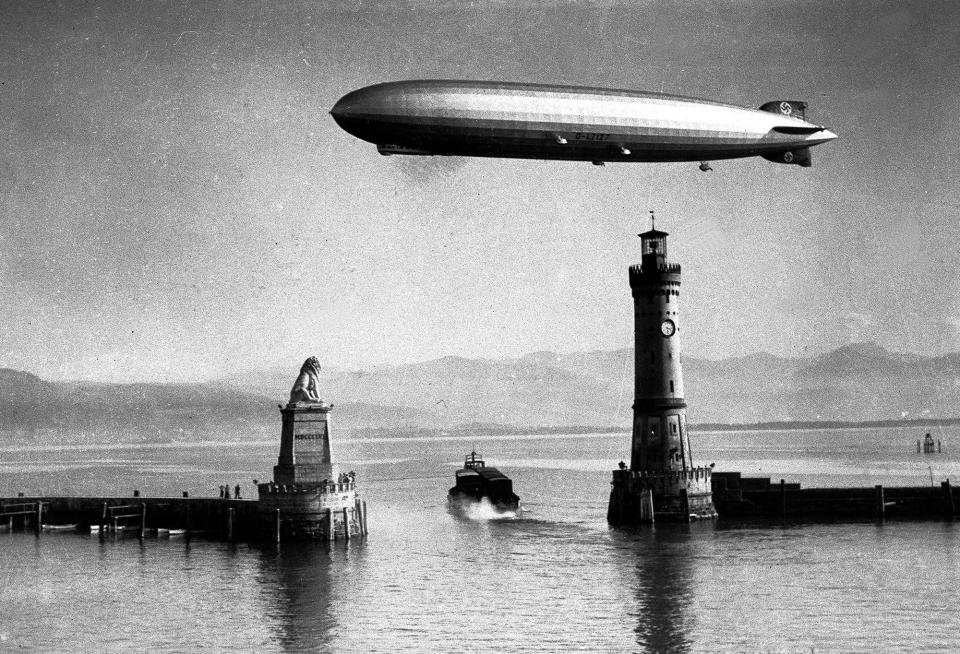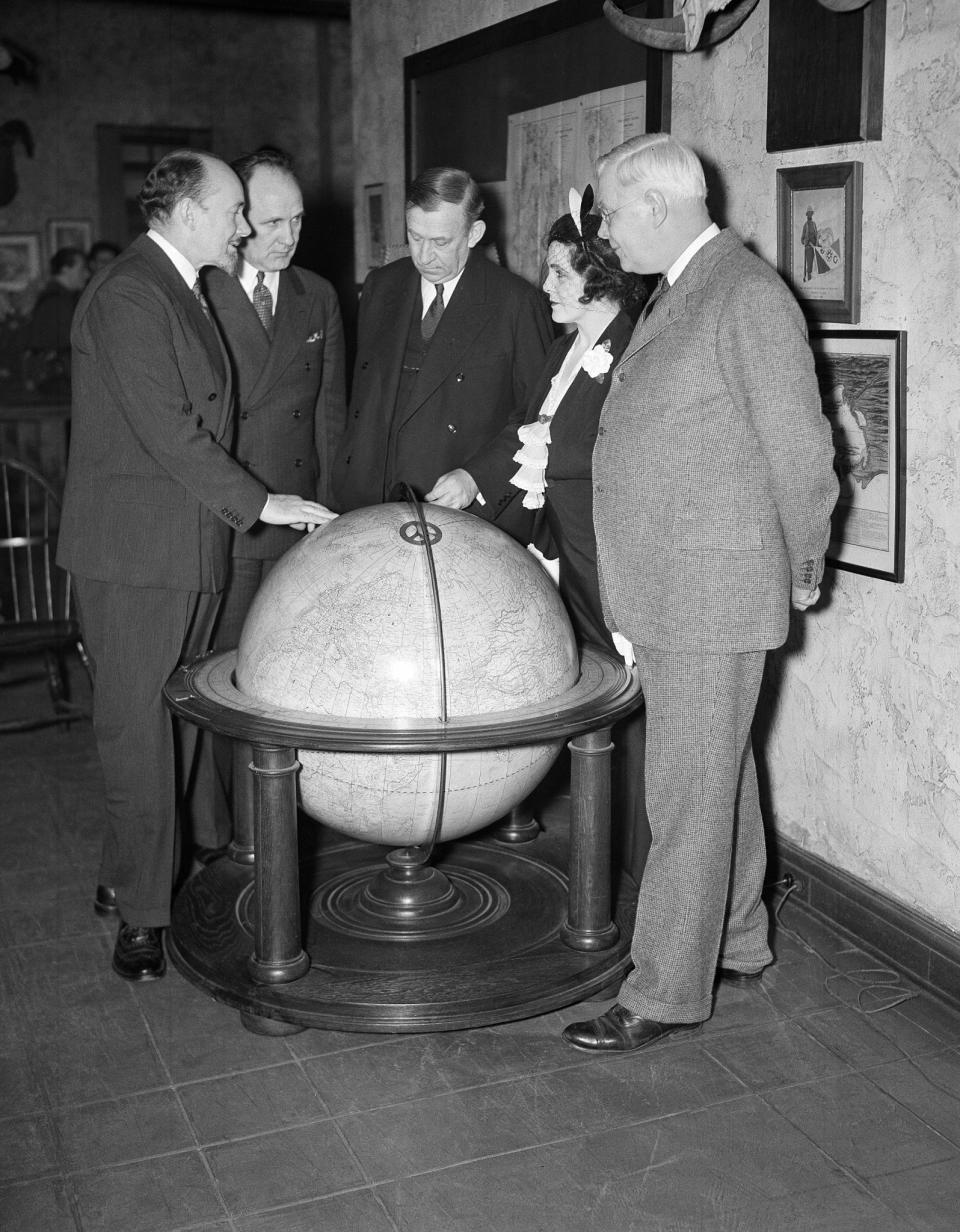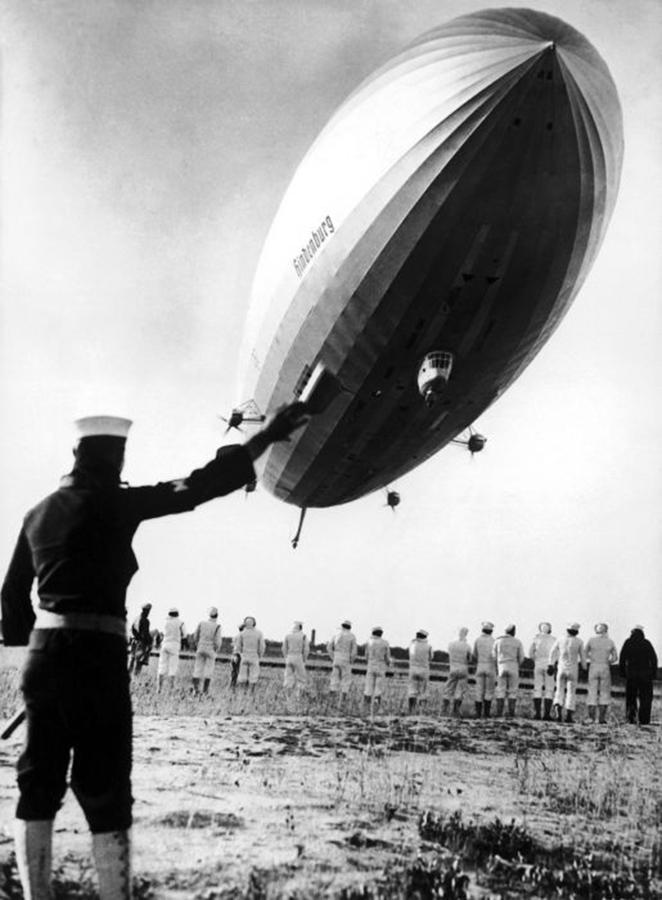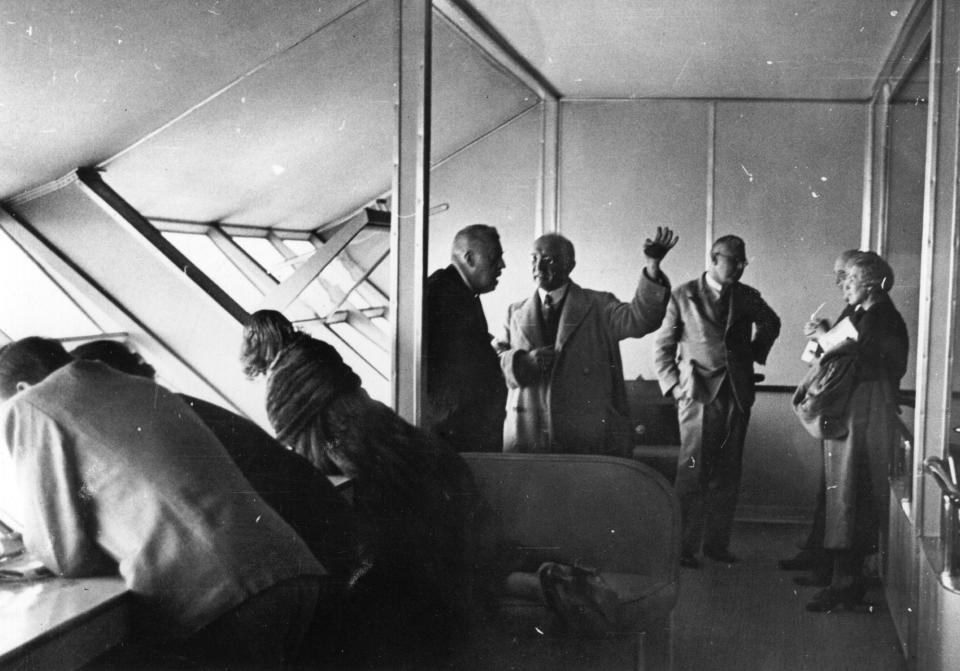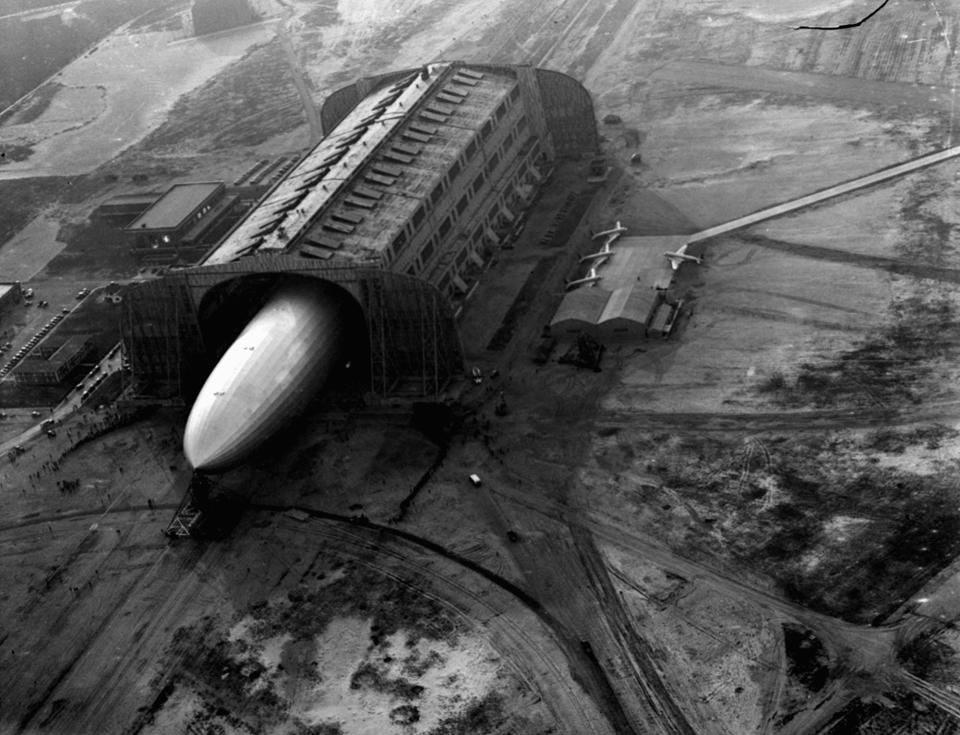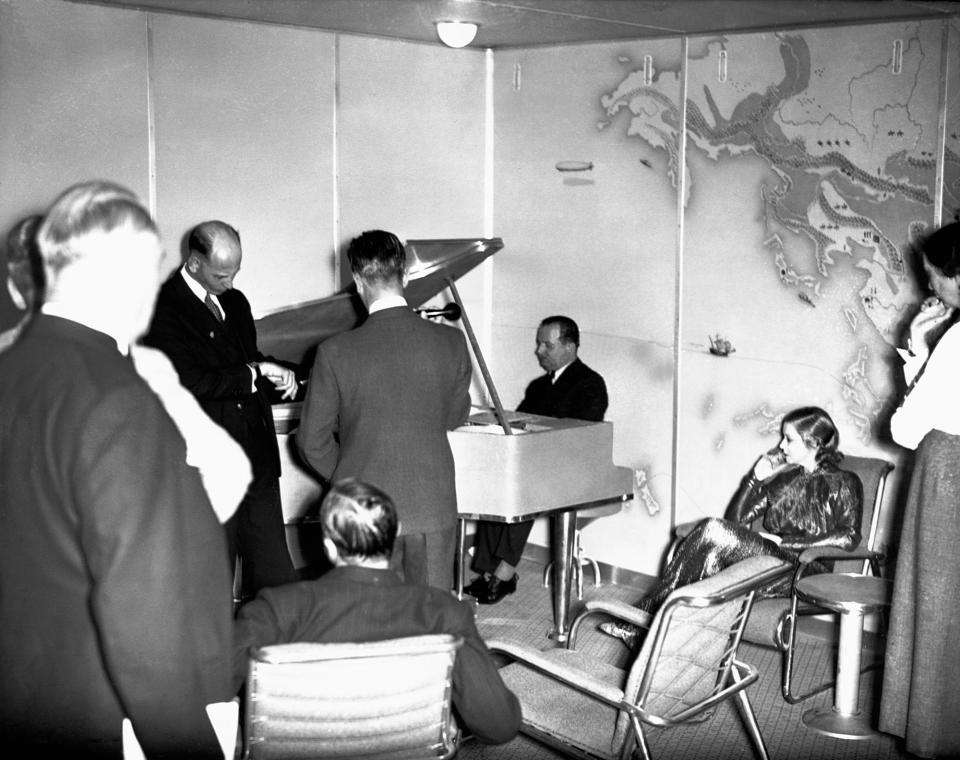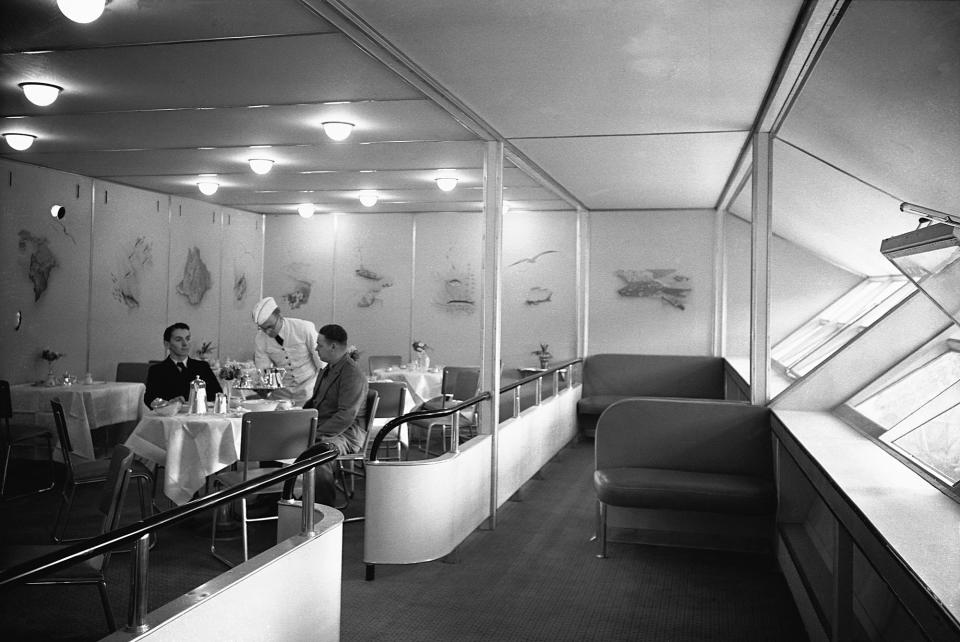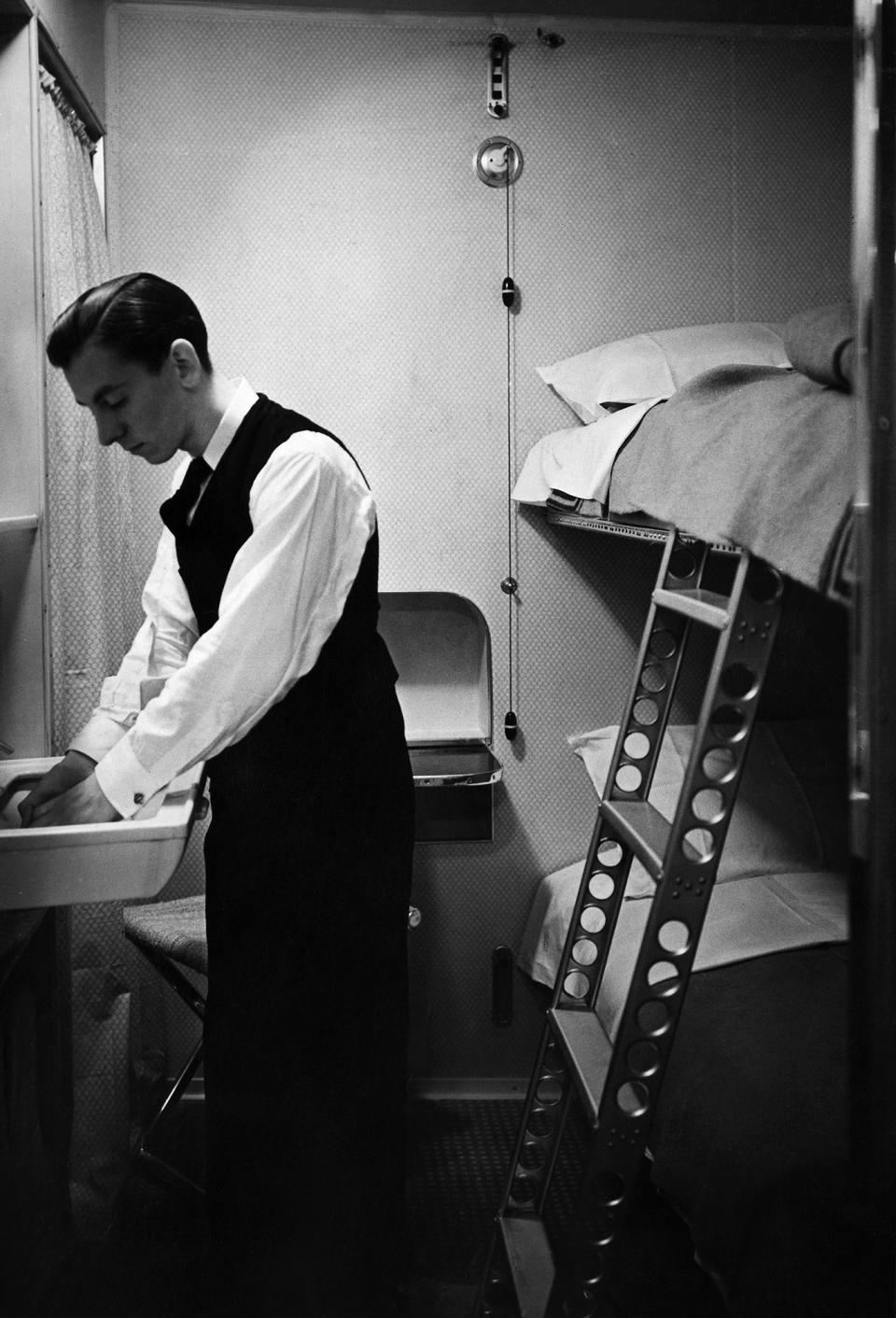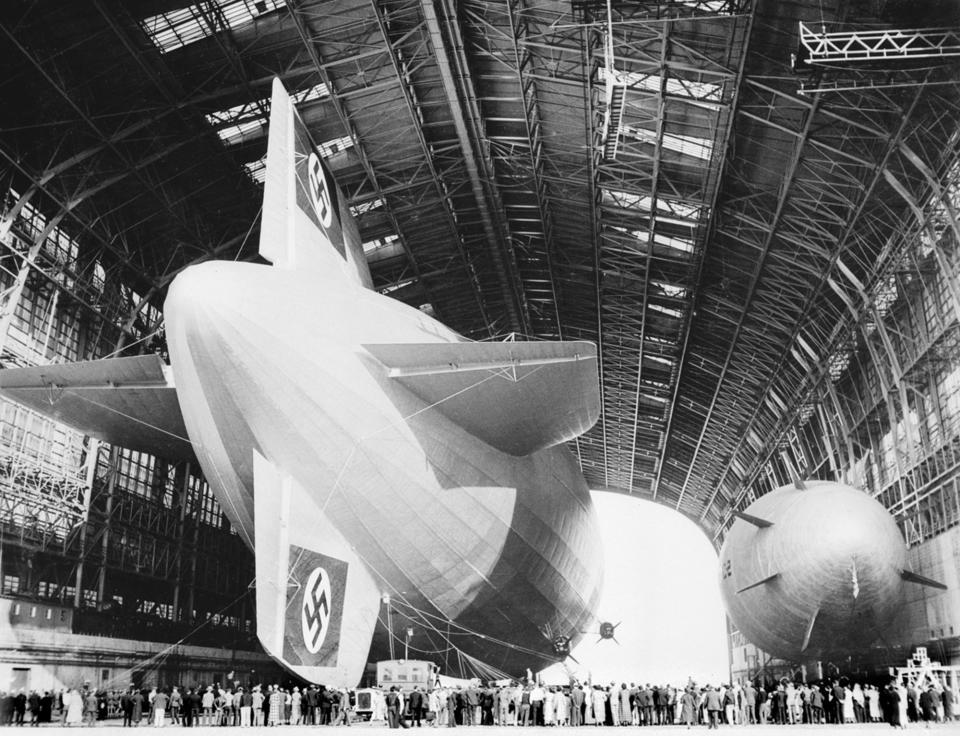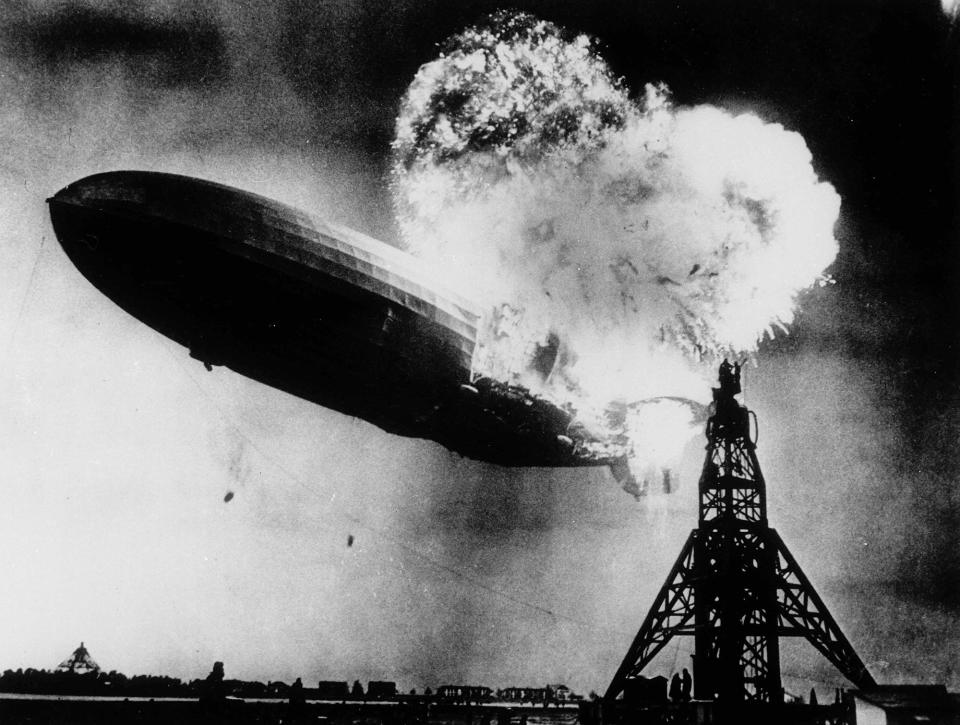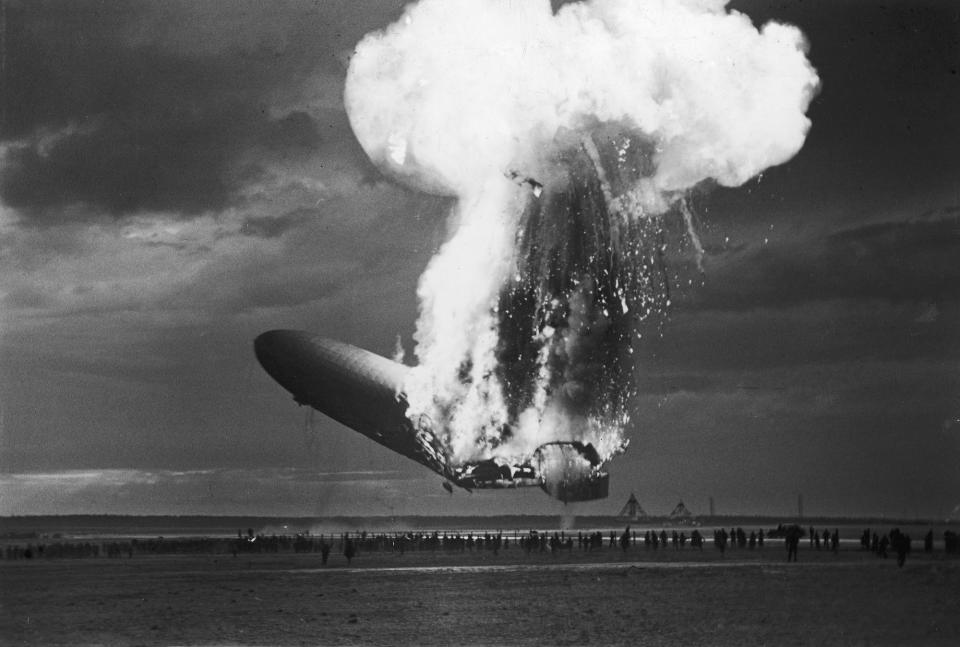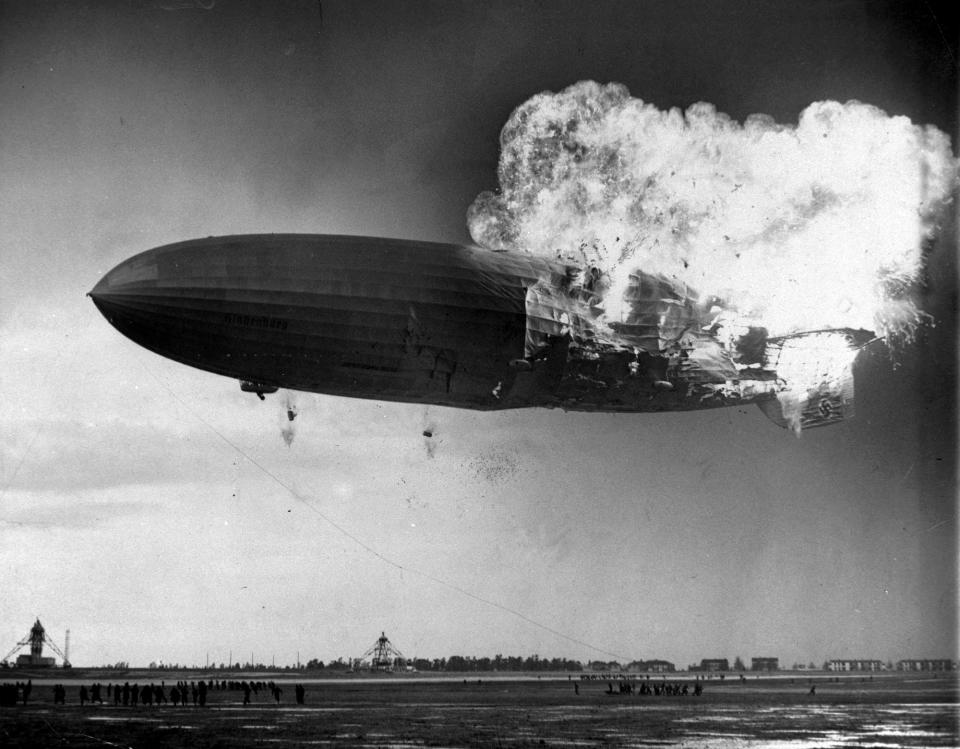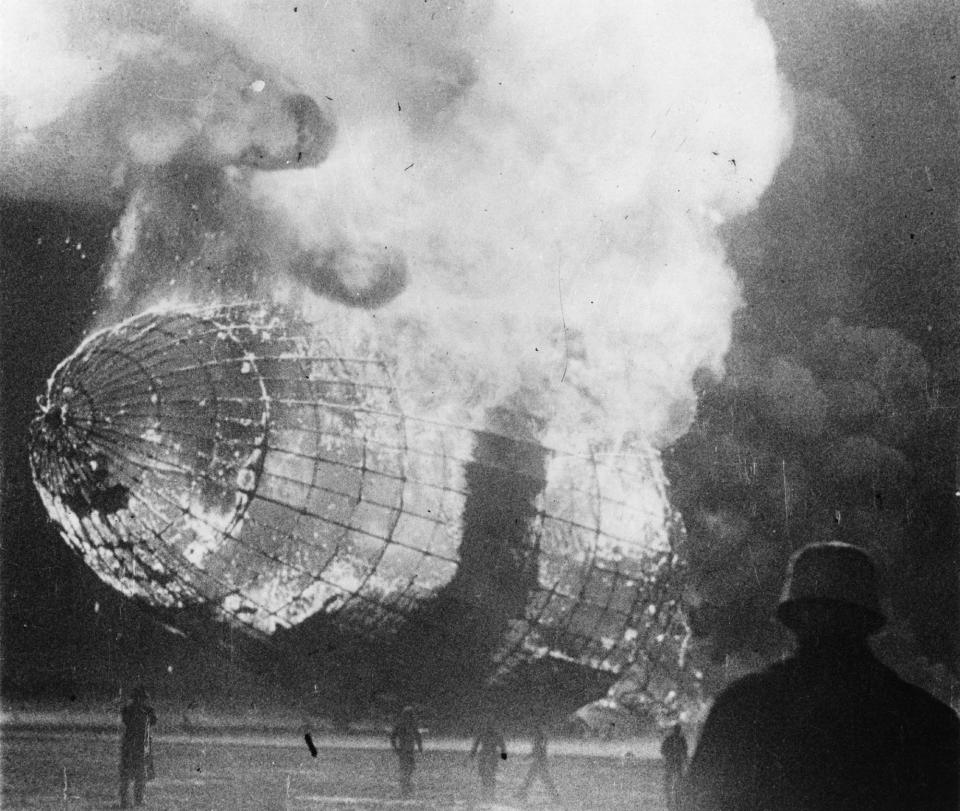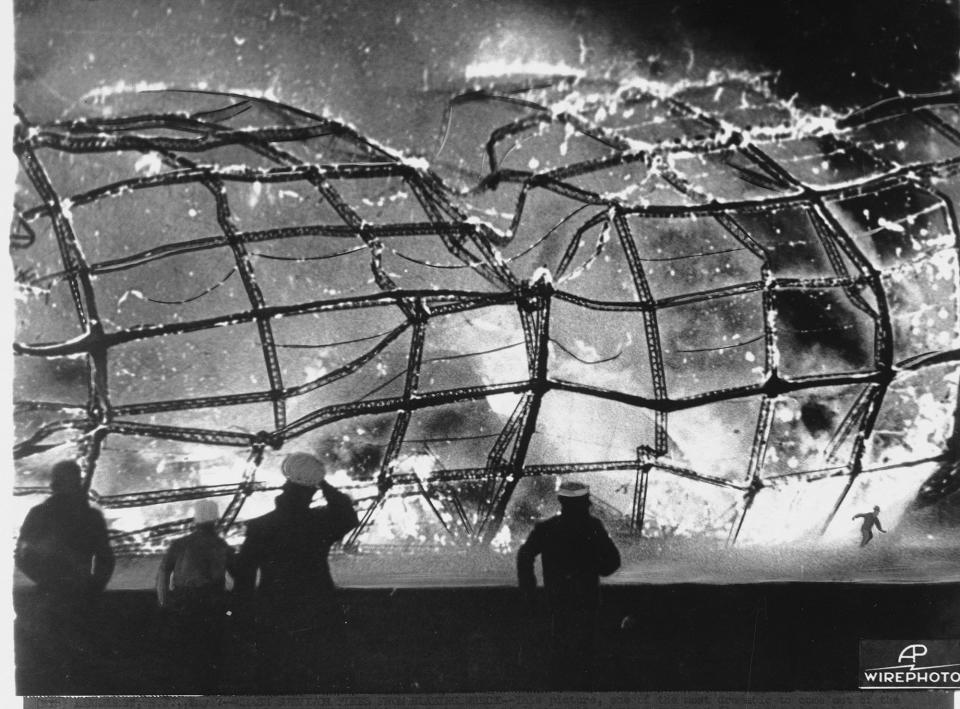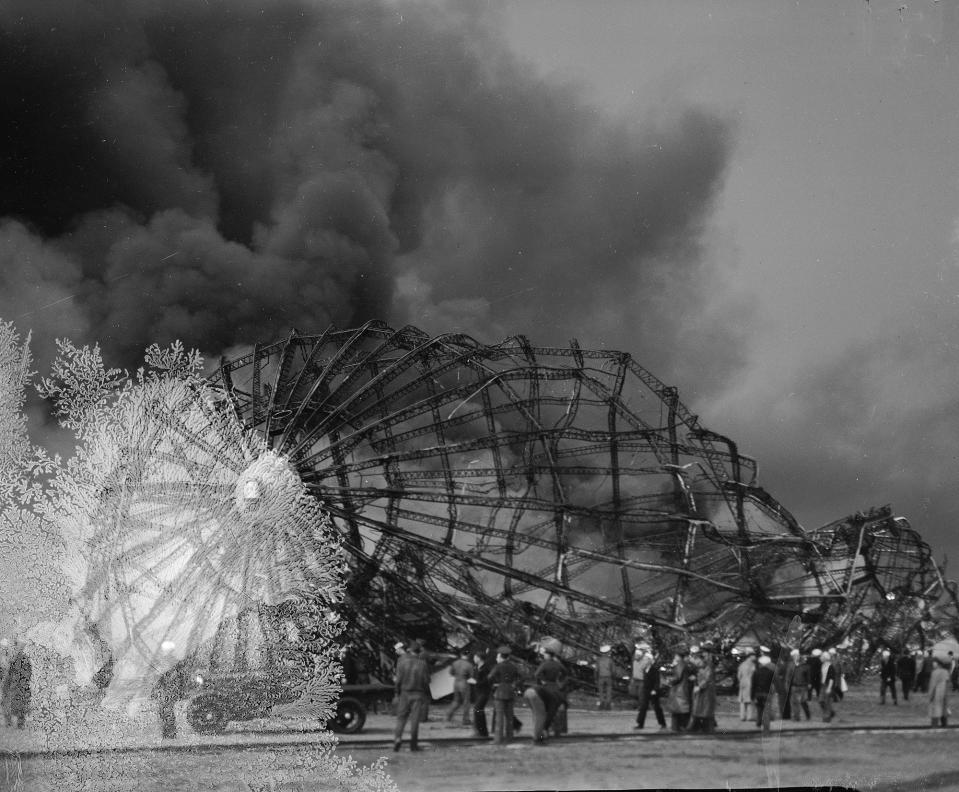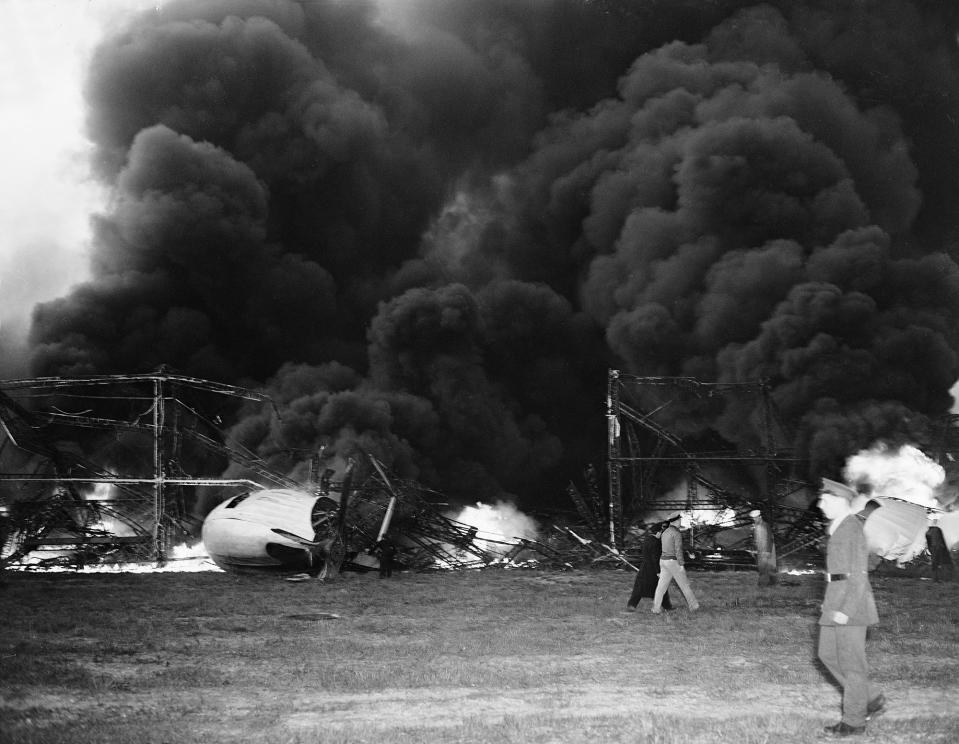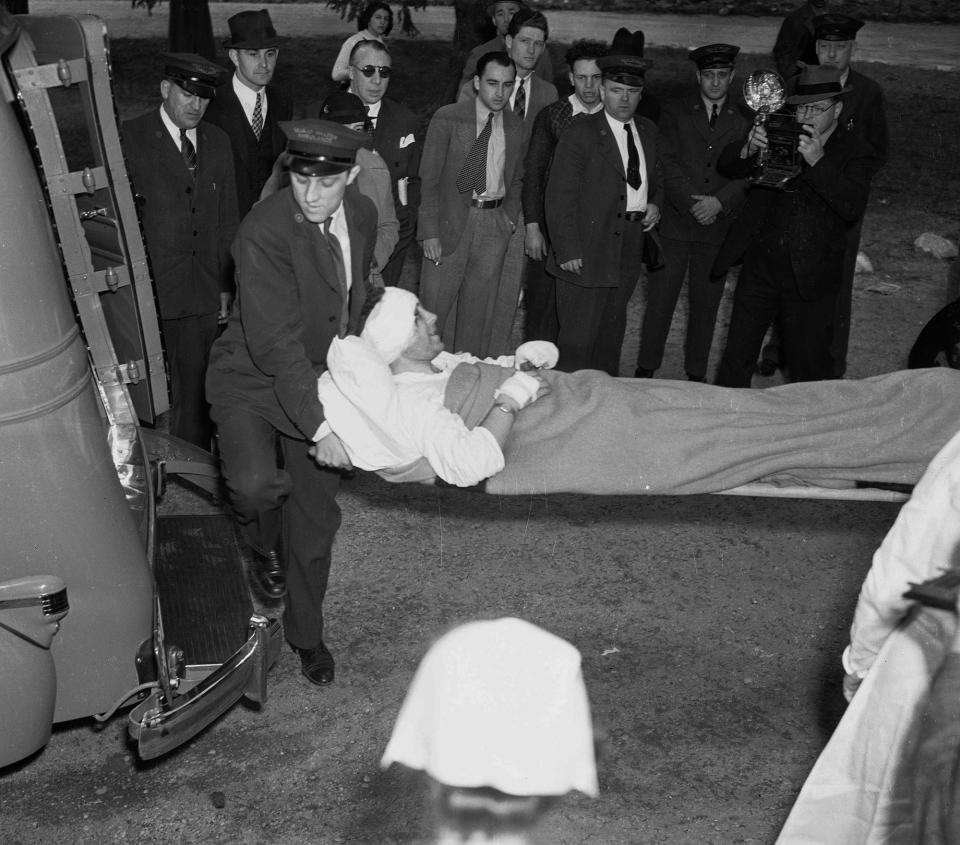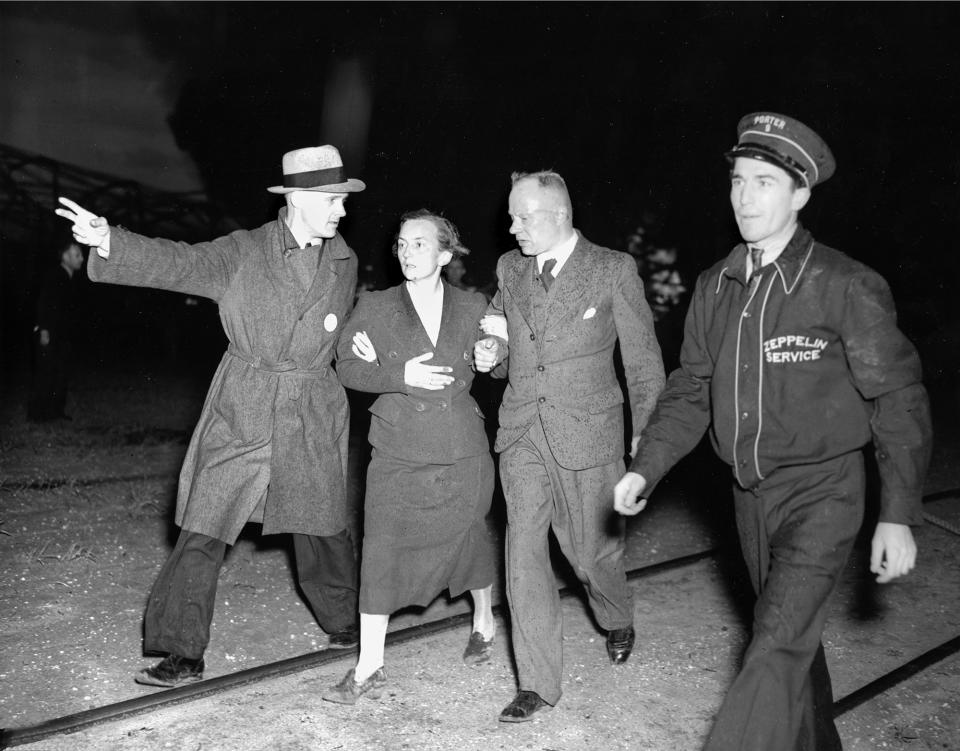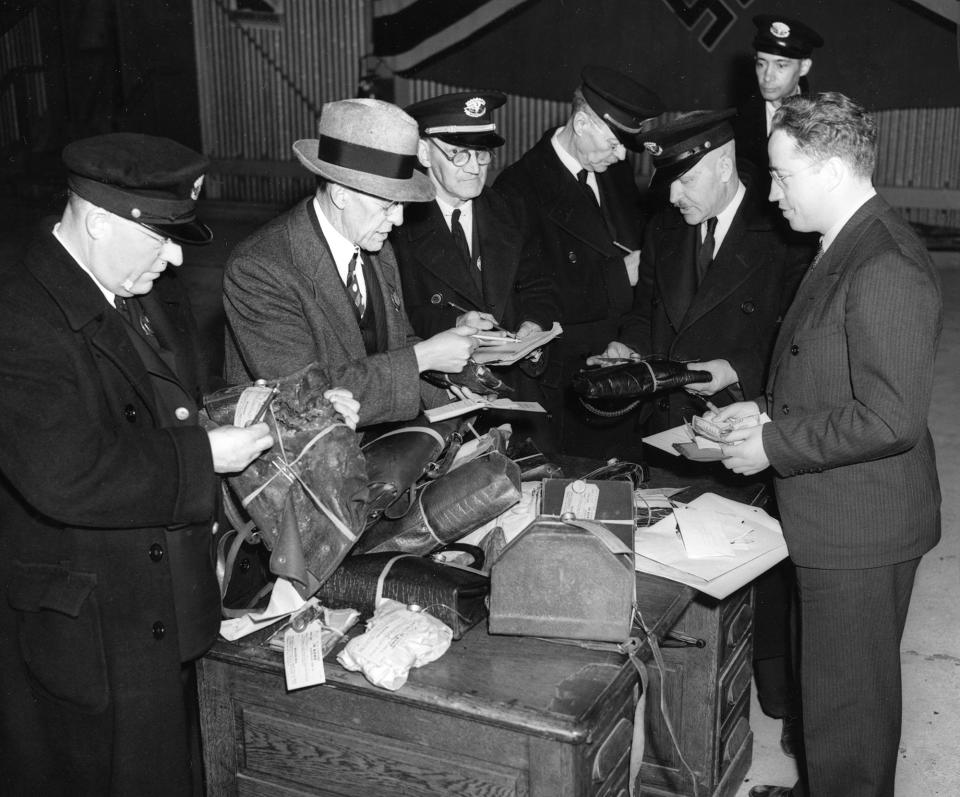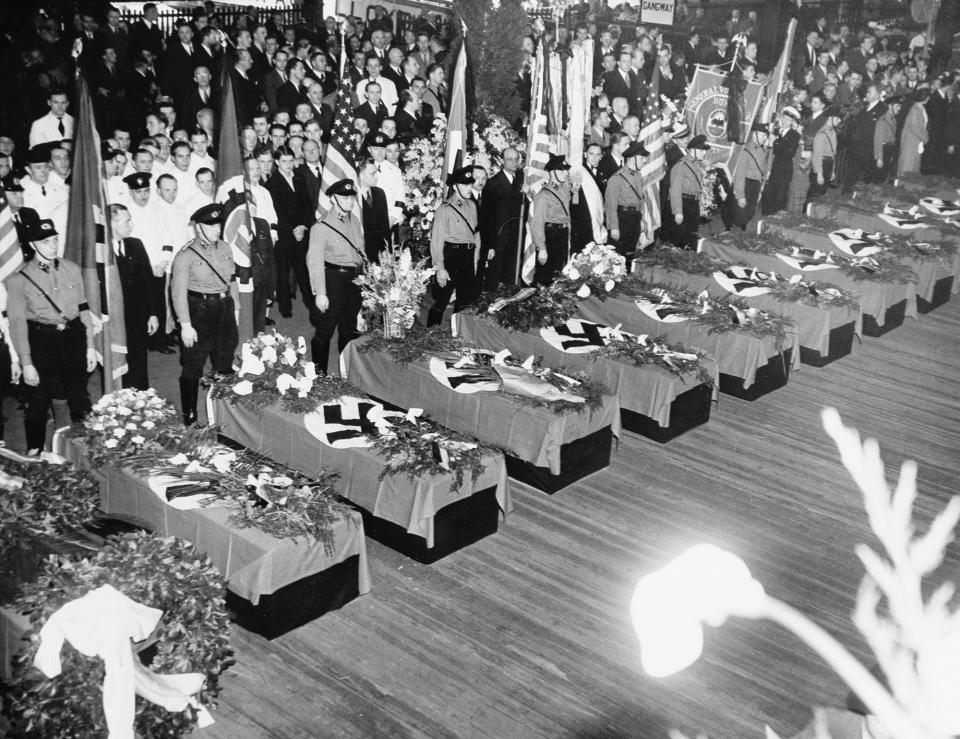The Hindenburg: A look back – from first flight to blazing inferno
According to the German airship Hindenburg’s flight schedule, LZ-129 Hindenburg, beginning on May 6, 1936, was the first airliner to provide regularly-scheduled service between Europe and North America. The Hindenburg made 11 flights from Frankfurt, Germany to Lakehurst, New Jersey, but on May 6, 1937, the German airship burst into flames at Lakehurst Naval Air Station. Thirty-five people aboard and one person on the ground died.
Here’s a look back at the Hindenburg from it’s construction and life aboard, to that horrible night of the deadly explosion.
_____
To commemorate the 80th anniversary of the Hindenburg disaster, the Associated Press has re-published their coverage from the scene.
___
LAKEWOOD, N.J. (AP) — Its silvery bulk shattered by a terrific explosion, the German air liner Hindenburg plunged in flames at the United States Naval air station tonight, with indications that 34 of the 100 aboard and one spectator perished.
As minor explosions continued to tear its twisted aluminum skeleton and ribboned fabric for hours afterward, an official announcement listed as having survived 24 of 39 passengers aboard and 42 out of the 61 members of the crew, thus leaving a total of 34 unaccounted for. Twenty-four bodies were counted in two places, thirteen at the naval sick bay and eleven in the great hangar itself.
Timothy W. Margerum of Lakewood said there were more corpses in the naval station’s garage which had been hurriedly transformed into a morgue. Many of the dead were horribly burned by the oil fed flames. Margerum reported others were dying. Hospitals for miles around were filled with the injured.
The navy department in Washington said it was advised at least 48 persons were killed.
An explosion of the No. 2 gas cell toward the stern of the ship was named as the cause of the disaster by State Aviation Commissioner Gill Robb Wilson, who called the blast “strange.” The highly inflammable hydrogen gas billowed into fierce flame as the explosion plummeted the ship to the air field.
Ground spectators said crew members in the stern of the ship “never had a chance” to escape.
The disaster struck without the least warning. The ship had angled its blunt nose toward the mooring mast, the spider-like landing lines had been snaked down and the ground crew had grasped the ropes from the nose, when the explosion roared out, scattering ground crew and spectators like frightened sheep.
The passengers, who were waving gayly a minute before from the observation windows, were so stunned they could not describe late what happened. Some jumped to the sandy landing field along with members of the crew. Others seemed to have been pitched from the careening skyliner as it made its death plunge.
The heat drove back would-be rescuers, so it could not be determined for how many the Hindenburg made a burning tomb. Fire departments from nearby communities converged on the field and soon had streams of water playing on the broken air liner. The flames still enveloped the outline of the ship, apparently feeding on the fuel oil supply with the Hindenburg carried for its Diesel engines.
Somewhere in the glowing furnace were the two dogs, 340 pounds of mail, and the ton of baggage which it had aboard.
Read the rest of the story from the Associated Press >>
_____
See more news-related photo galleries and follow us on Yahoo News Photo Tumblr.

